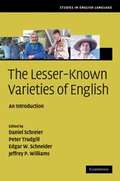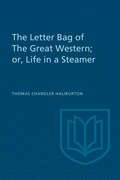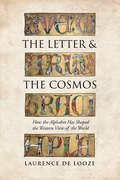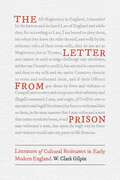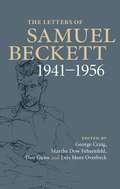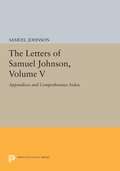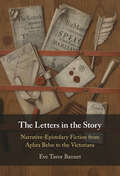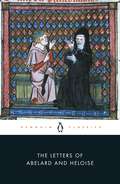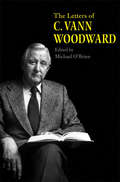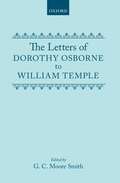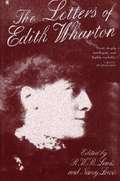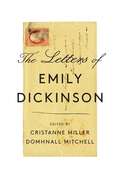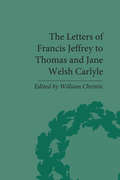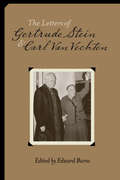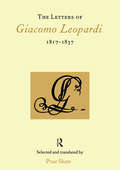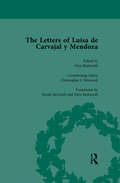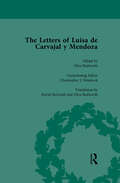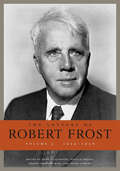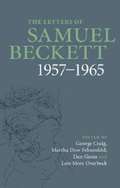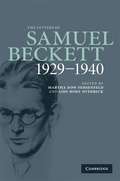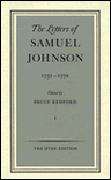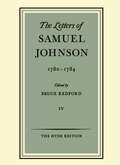- Table View
- List View
The Lesser-Known Varieties of English
by Daniel Schreier Peter Trudgill Edgar W. Schneider Jeffrey P. WilliamsThis is the first ever volume to compile sociolinguistic and historical information on lesser-known, and relatively ignored, native varieties of English around the world. Exploring areas as diverse as the Pacific, South America, the South Atlantic and West Africa, it shows how these varieties are as much part of the big picture as major varieties and that their analysis is essential for addressing some truly important issues in linguistic theory, such as dialect obsolescence and death, language birth, dialect typology and genetic classification, patterns of diffusion and transplantation and contact-induced language change. It also shows how close interwoven fields such as social history, contact linguistics and variationist sociolinguistics are in accounting for their formation and maintenance, providing a thorough description of the lesser-known varieties of English and their relevance for language spread and change.
The Letter Bag of The Great Western;: or, Life in a Steamer
by Douglas Lochhead Thomas HaliburtonAside from Sam Slick, the book which gained Haliburton the greatest notoriety was The Letter Bag of The Great Western; or, Life in a Steamer, published in 1840. Much of this book was composed for the diversion of the other passengers on Haliburton’s steamship voyage from Bristol to New York in 1839. The book’s ostensible function was the advertisement of the advantages of travel by steamship, but few, after reading the passengers’ accounts of their voyage, would, if they took them seriously, ever venture off shore. The book’s principal sources of amusement – infirmities of the human body (seasickness), the peculiarities of spelling and grammar that arise from faulty or defective education, the cultural mores of other races and lower classes, and the outrageous punning.
The Letter and the Cosmos: How the Alphabet Has Shaped the Western View of the World
by Laurence N de LoozeFrom our first ABCs to the Book of Revelation's statement that Jesus is "the Alpha and Omega," we see the world through our letters. More than just a way of writing, the alphabet is a powerful concept that has shaped Western civilization and our daily lives. In The Letter and the Cosmos, Laurence de Looze probes that influence, showing how the alphabet has served as a lens through which we conceptualize the world and how the world, and sometimes the whole cosmos, has been perceived as a kind of alphabet itself. Beginning with the ancient Greeks, he traces the use of alphabetic letters and their significance from Plato to postmodernism, offering a fascinating tour through Western history.A sharp and entertaining examination of how languages, letterforms, orthography, and writing tools have reflected our hidden obsession with the alphabet, The Letter and the Cosmos is illustrated with copious examples of the visual and linguistic phenomena which de Looze describes. Read it, and you'll never look at the alphabet the same way again.
The Letter from Prison: Literature of Cultural Resistance in Early Modern England
by W. Clark GilpinLetters from prison testifying to deeply felt ethical principles have a long history, extending from antiquity to the present day. In the early modern era, the rise of printing houses helped turn these letters into a powerful form of political and religious resistance. W. Clark Gilpin’s fascinating book examines how letter writers in England—ranging from archbishops to Quaker women—consolidated the prison letter as a literary form.Drawing from a large collection of printed prison letters written from the reign of Henry VIII to the closing decades of the seventeenth century, Gilpin explores the genre's many facets within evolving contexts of reformation and revolution. The writers of these letters portrayed the prisoner of conscience as a distinct persona and the prison as a place of redemptive suffering where bearing witness had the power to change society.The Letter from Prison features a diverse cast of characters and a literary genre that combines drama and inspiration. It is sure to appeal to those interested in early modern England, prison literature, and cultural forms of resistance.
The Letters Of Samuel Beckett, 1941-1956
by Samuel Beckett Martha Dow Fehsenfeld Lois More Overbeck George Craig Dan GunnThis second volume of The Letters of Samuel Beckett opens with the war years, when it was often impossible or too dangerous to correspond. The surge of letters beginning in 1945, and their variety, are matched by the outpouring and the range of Beckett's published work. Primarily written in French and later translated by the author, the work includes stories, a series of novels (Molloy, Malone meurt and L'Innommable), essays and plays - most notably En attendant Godot. The letters chronicle a passionately committed but little known writer evolving into a figure of international reputation, and his response to such fame. The volume provides detailed introductions which discuss Beckett's situation during the war and his crucial move into the French language, as well as translations of the letters, explanatory notes, year-by-year chronologies, profiles of correspondents and other contextual information.
The Letters Of Samuel Johnson, Volume V: Appendices And Comprehensive Index (Princeton Legacy Library #270)
by Bruce RedfordWith these two volumes Princeton University Press concludes the first scholarly edition of the letters of Samuel Johnson to appear in forty years. Volume IV chronicles the last three years of Johnson's life, an epistolary endgame that includes the breakup of the friendship with Hester Thrale and a poignant reaching out to new friends and new experiences. Volume V includes not only the comprehensive index but those undated letters that cannot confidently be assigned to a specific year, "ghost" letters (those whose existence is documented in other sources), three letters that have recently been recovered, and translations of Johnson's letters in Latin. Bruce Redford is Professor of English at the University of Chicago and the author of The Converse of the Pen: Acts of Intimacy in the Eighteenth-Century Familiar Letter (Chicago).
The Letters in the Story: Narrative-Epistolary Fiction from Aphra Behn to the Victorians
by Eve Tavor BannetThe long tradition of mixta-genera fiction, particularly favoured by women novelists, which combined fully-transcribed letters and third-person narrative has been largely overlooked in literary criticism. Working with recognized formal conventions and typical thematic concerns, Tavor Bannet demonstrates how narrative-epistolary novels opposed the real, situated, transactional and instrumental character of letters, with their multi-lateral relationships and temporally shifting readings, to merely documentary uses of letters in history and law. Analyzing issues of reading and misreading, knowledge and ignorance, communication and credulity, this study investigates how novelists adapted familiar romance plots centred on mysteries of identity to test the viability of empiricism's new culture of fact and challenge positivism's later all-pervading regime of truth. Close reading of narrative-epistolary novels by authors ranging from Aphra Behn and Charlotte Lennox to Frances Burney and Wilkie Collins tracks transgenerational debates, bringing to light both what Victorians took from their eighteenth-century forbears and what they changed.
The Letters of Abelard and Heloise: Tr. From The Original Latin And Now Reprinted From The Edition Of 1722
by Peter AbelardThe story of Abelard and Heloise remains one of the world's most celebrated and tragic love affairs. Through their letters, we follow the path of their romance from its reckless and ecstatic beginnings when Heloise became Abelard's pupil, through the suffering of public scandal and enforced secret marriage, to their eventual separation.
The Letters of C. Vann Woodward
by C. Vann Woodward Michael O'BrienC. Vann Woodward was one of the most prominent and respected American historians of the twentieth century. He was also a very gifted and frequent writer of letters, from his earliest days as a young student in Arkansas and Georgia to his later days at Yale when he became one of the arbiters of American intellectual culture. For the first time, his sprightly, wry, sympathetic, and often funny letters are published, including those he wrote to figures as diverse as John Kennedy, David Riesman, Richard Hofstadter, and Robert Penn Warren. The letters shed new light not only on Woodward himself, but on what it meant to be an American radical and public intellectual, as well as on the complex politics and discourse of the historical profession and the anxious modulations of Southern culture.
The Letters of Dorothy Osborne to William Temple
by G. C. Moore SmithA scholarly edition of the letters of Dorothy Osborne to William Temple. The edition presents an authoritative text, together with an introduction, commentary notes, and scholarly apparatus.
The Letters of Edith Wharton
by Edith WhartonA careful selection, including Wharton's "major" letters that are often quoted, and for the first time, a substantial portion of her correspondence with Morton Fullerton, with whom she had an affair while in her mid-40s.
The Letters of Emily Dickinson
by Emily DickinsonThe definitive edition of Emily Dickinson’s correspondence, expanded and revised for the first time in over sixty years.Emily Dickinson was a letter writer before she was a poet. And it was through letters that she shared prose reflections—alternately humorous, provocative, affectionate, and philosophical—with her extensive community. While her letters often contain poems, and some letters consist entirely of a single poem, they also constitute a rich genre all their own. Through her correspondence, Dickinson appears in her many facets as a reader, writer, and thinker; social commentator and comedian; friend, neighbor, sister, and daughter.The Letters of Emily Dickinson is the first collected edition of the poet’s correspondence since 1958. It presents all 1,304 of her extant letters, along with the small number available from her correspondents. Almost 300 are previously uncollected, including letters published after 1958, letters more recently discovered in manuscript, and more than 200 “letter-poems” that Dickinson sent to correspondents without accompanying prose. This edition also redates much of her correspondence, relying on records of Amherst weather patterns, historical events, and details about flora and fauna to locate the letters more precisely in time. Finally, updated annotations place Dickinson’s writing more firmly in relation to national and international events, as well as the rhythms of daily life in her hometown. What emerges is not the reclusive Dickinson of legend but a poet firmly embedded in the political and literary currents of her time.Dickinson’s letters shed light on the soaring and capacious mind of a great American poet and her vast world of relationships. This edition presents her correspondence anew, in all its complexity and brilliance.
The Letters of Evelyn Waugh
by Evelyn Waugh Mark AmoryThe correspondence of English author Evelyn Waugh, who lived from 1903 to 1966.
The Letters of Francis Jeffrey to Thomas and Jane Welsh Carlyle (The Pickering Masters)
by William ChristieContains letters from Francis Jeffrey (1773-1850) to Thomas Carlyle (1795-1881) and Jane Welsh Carlyle (1801-1866). The letters in this title present a personal and intellectual narrative of nineteenth-century Britain.
The Letters of Gertrude Stein and Carl Van Vechten, 1913-1946
by Gertrude Stein Carl Van VechtenThis monumental collection of correspondence between Gertrude Stein and critic, novelist, and photographer Carl Van Vechten provides crucial insight into Stein's life, art, and artistic milieu as well as Van Vechten's support of major cultural projects, such as the Harlem Renaissance. From their first meeting in 1913, Stein and Van Vechten formed a unique and powerful relationship, and Van Vechten worked vigorously to publish and promote Stein's work. Existing biographies of Stein—including her own autobiographical writings—omit a great deal about her experiences and thought. They lack the ordinary detail of what Stein called "daily everyday living": the immediate concerns, objects, people, and places that were the grist for her writing. These letters not only vividly represent those details but also showcase Stein and Van Vechten's private selves as writers. Edward Burns's extensive annotations include detailed cross-referencing of source materials.
The Letters of Giacomo Leopardi 1817-1837
by Prue Shaw"Giacomo Leopardi, Italy's great poet of the Romantic age, is the author of some of the most beautiful and best-loved poems in the Italian language and some of the most remarkable letters in European literature. The interest of the letters in both biographical and literary: they document the background - the difficult personal circumstances, the intense and troubled family relationships, the contacts and friendships with other writers - against which a haunting and compelling poetic voice came to maturity. The letters, not previously available in English except fragmentarily, are here offered in a new translation undertaken to celebrate the poet's birth in 1798. In the light of growing academic interest in Italy and the re-organization of many university courses in Italian along interdisciplinary lines, this book series brings together different scholarly perspectives on Italy and its culture. Italian Perspectives incorporates books and essay collections and is published under Maney's Northern University Press Imprint. It is notable for the breadth and diversity of themes covered, incorporating all aspects and periods of Italian literature, language, history, culture, politics, art and media, as well as studies which take an interdisciplinary approach and are methodologically innovative. The series welcomes books written in English and in Italian. The Italian Perspectives series is edited by two established scholars in the field of Italian studies, supported by an international Advisory Board."
The Letters of J.R.R. Tolkien: Revised and Expanded Edition
by J.R.R. TolkienThe comprehensive collection of letters spanning the adult life of one of the world’s greatest storytellers, now revised and expanded to include more than 150 previously unseen letters, with revealing new insights into The Hobbit, The Lord of the Rings and The Silmarillion.J.R.R. Tolkien, creator of the languages and history of Middle-earth as recorded in The Hobbit, The Lord of the Rings and The Silmarillion, was one of the most prolific letter-writers of the last century. Over the years he wrote a mass of letters—to his publishers, to members of his family, to friends, and to “fans” of his books—which often reveal the inner workings of his mind, and which record the history of composition of his works and his reaction to subsequent events.A selection from Tolkien’s correspondence, collected and edited by Tolkien’s official biographer, Humphrey Carpenter, and assisted by Christopher Tolkien, was published in 1981. It presented, in Tolkien’s own words, a highly detailed portrait of the man in his many aspects: storyteller, scholar, Catholic, parent, friend, and observer of the world around him.In this revised and expanded edition of The Letters of J.R.R. Tolkien, it has been possible to go back to the editors’ original typescripts and notes, restoring more than 150 letters that were excised purely to achieve what was then deemed a “publishable length.” and present the book as originally intended.Enthusiasts for his writings will find much that is new, for the letters not only include fresh information about Middle-earth, such as Tolkien’s own plot summary of the entirety of The Lord of the Rings and a vision for publishing his “Tales of the Three Ages,” but also many insights into the man and his world. In addition, this new selection will entertain anyone who appreciates the art of letter-writing, of which J.R.R. Tolkien was a master.
The Letters of Luisa de Carvajal y Mendoza Vol 1
by Glyn Redworth Christopher J HenstockLuisa de Carvajal y Mendoza (1566–1614) was a noblewoman who left her native Spain for a life of self-imposed exile and Catholic evangelism in Jacobean England. Her letters provide an unparalleled resource. This edition presents 180 letters, newly translated and set in context.
The Letters of Luisa de Carvajal y Mendoza Vol 2
by Glyn Redworth Christopher J HenstockLuisa de Carvajal y Mendoza (1566–1614) was a noblewoman who left her native Spain for a life of self-imposed exile and Catholic evangelism in Jacobean England. Her letters provide an unparalleled resource. This edition presents 180 letters, newly translated and set in context.
The Letters of Robert Frost
by Robert FrostOne of the acknowledged giants of twentieth-century American literature, Robert Frost was a public figure much celebrated in his day. Although his poetry reached a wide audience, the private Frost--pensive, mercurial, and often very funny--remains less appreciated. Following upon the publication of Frost's notebooks and collected prose, "The Letters of Robert Frost" is the first major edition of the poet's written correspondence. The hundreds of previously unpublished letters in these annotated volumes deepen our understanding and appreciation of this most complex and subtle of verbal artists. Volume One traverses the years of Frost's earliest poems to the acclaimed collections "North of Boston "and "Mountain Interval "that cemented his reputation as one of the leading lights of his era. The drama of his personal life--as well as the growth of the audacious mind that produced his poetry--unfolds before us in Frost's day-to-day missives. These rhetorical performances are at once revealing and tantalizingly evasive about relationships with family and close friends, including the poet Edward Thomas. We listen in as Frost defines himself against contemporaries Ezra Pound and William Butler Yeats, and we witness the evolution of his thoughts about prosody, sound, style, and other aspects of poetic craft. In its literary interest and sheer display of personality, Frost's correspondence is on a par with the letters of Emily Dickinson, Robert Lowell, and Samuel Beckett. "The Letters of Robert Frost" holds hours of pleasurable reading for lovers of Frost and modern American poetry.
The Letters of Robert Frost, Volume 3: 1929-1936
by Robert FrostThe third installment of Harvard’s five-volume edition of Robert Frost’s correspondence. The Letters of Robert Frost, Volume 3: 1929–1936 is the latest installment in Harvard’s five-volume edition of the poet’s correspondence. It presents 589 letters, of which 424 are previously uncollected. The critically acclaimed first volume, a Times Literary Supplement Book of the Year, included nearly 300 previously uncollected letters, and the second volume 350 more. During the period covered here, Robert Frost was close to the height of his powers. If Volume 2 covered the making of Frost as America’s poet, in Volume 3 he is definitively made. These were also, however, years of personal tribulation. The once-tight Frost family broke up as marriage, illness, and work scattered the children across the country. In the case of Frost’s son Carol, both distance and proximity put strains on an already fractious relationship. But the tragedy and emotional crux of this volume is the death, in Montana, of Frost’s youngest daughter, Marjorie. Frost’s correspondence from those dark days is a powerful testament to the difficulty of honoring the responsibilities of a poet’s eminence while coping with the intensity of a parent’s grief. Volume 3 also sees Frost responding to the crisis of the Great Depression, the onset of the New Deal, and the emergence of totalitarian regimes in Europe, with wit, canny political intelligence, and no little acerbity. All the while, his star continues to rise: he wins a Pulitzer for Collected Poems in 1931 and will win a second for A Further Range, published in 1936, and he is in constant demand as a public speaker at colleges, writers’ workshops, symposia, and dinners. Frost was not just a poet but a poet-teacher; as such, he was instrumental in defining the public functions of poetry in the twentieth century. In the 1930s, Frost lived a life of paradox, as personal tragedy and the tumults of politics interwove with his unprecedented achievements. Thoroughly annotated and accompanied by a biographical glossary and detailed chronology, these letters illuminate a triumphant and difficult period in the life of a towering literary figure.
The Letters of Samuel Beckett 1957-1965 Volume 3
by Samuel Beckett Martha Dow Fehsenfeld Lois More Overbeck George Craig Dan GunnThis third volume of The Letters of Samuel Beckett focuses on the years when Beckett is striving to find a balance between the demands put upon him by his growing international fame, and his need for the peace and silence from which new writing might emerge. This is the period in which Beckett launches into work for radio, film and, later, into television. It also marks his return to writing fiction, with his first major piece for a decade, Comment c'est (How It Is). Where hitherto he has been reticent about the writing process, now he devotes letter after letter to describing and explaining his work in progress. For the first time Beckett has a woman as his major correspondent: a relationship shown in his intense and abundant letters to Barbara Bray. The volume also provides critical introductions, chronologies, explanatory notes and profiles of Beckett's main correspondents.
The Letters of Samuel Beckett, 1929-1940
by Samuel Beckett Martha Dow Fehsenfeld Lois More Overbeck George Craig Daniel Gunn Dan GunnThe letters written by Samuel Beckett between 1929 and 1940 provide a vivid and personal view of Western Europe in the 1930s, and mark the gradual emergence of Beckett's unique voice and sensibility. The Cambridge University Press edition of The Letters of Samuel Beckett offers for the first time a comprehensive range of letters of one of the greatest literary figures of the twentieth century. Selected for their bearing on his work from over 15,000 extant letters, the letters published in this four-volume edition encompass sixty years of Beckett's writing life (1929-1989), and include letters to friends, painters and musicians, as well as to students, publishers, translators, and colleagues in the world of literature and theatre. For anyone interested in twentieth-century literature and theatre this edition is essential reading, offering not only a record of Beckett's achievements but a powerful literary experience in itself.
The Letters of Samuel Johnson
by Bruce RedfordThe Hyde Edition is also the first systematically to record substantive deletions, which can yield intimate knowledge of Johnson's stylistic procedures, mental habits, and chains of association. Furthermore, its ownership credits document the current disposition of the manuscripts, hundreds of which have changed hands during the last four decades. Finally, the annotation of the letters incorporates the many significant discoveries of postwar Johnsonian scholarship, as well as decoding references that had previously resisted explanation.
The Letters of Samuel Johnson 1782-1784 (The Hyde Edition #Vol. IV)
by Samuel JohnsonThis epistolary endgame includes the breakup of the friendship with Hester Thrale, medical dramas of every description, and a poignant reaching out to new friends and new experiences. The letters of 1782-84 exemplify in abundance what Johnson himself praises and provides, 'the interchange of that social officiousness by which we are habitually endeared to one another.
